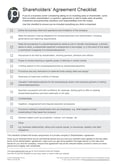 I was recently involved in a transaction where two equal shareholders and directors of a company had decided to part ways. The company had been operating in the business services sector for 20 years and the plan was for one director to buy the other out.
I was recently involved in a transaction where two equal shareholders and directors of a company had decided to part ways. The company had been operating in the business services sector for 20 years and the plan was for one director to buy the other out.
As part of the settlement JPAbusiness was tasked with providing a valuation estimate of the business.
First, we came up with the going concern value (goodwill and related business assets) on a market basis.
We then said to directors: “But that is not the share value, and given that one of you is buying the other’s shares in the company that owns the business, we need to give you the correct value of share equity.”
I was surprised to find that these two company directors, who had run a successful business for 20 years, did not completely understand the difference between going concern value and equity value.
On reflection, I concluded that if they weren’t aware of the difference, it was likely other business operators were similarly in the dark – hence, I decided to write this blog!
So, what is the difference?
If you are a business owner and someone offers to buy your business, their offer price can often look quite good on the surface.
However, it is the basis on which that price is offered that determines whether the price represents true value for the business or not.
An offer price will usually be based on one of two concepts, which I call:
- Going concern business value (goodwill and related business asset value)
- Equity value (share value).
To help explain these concepts, imagine you own a mid-size manufacturing business, ABC Manufacturing.
The business is owned by a company – ABC Pty Ltd – of which you are the sole director and shareholder.
ABC Pty Ltd’s (very simplified!) balance sheet shows the following:
|
Assets |
Liabilities |
||
|
Debtors |
$500,000 |
Creditors |
$350,000 |
|
Cash |
$50,000 |
Unpaid employee entitlements |
$25,000 |
|
Equipment |
$200,000 |
GST liabilities |
$25,000 |
|
Inventory |
$150,000 |
Long-term debt |
$1.0m |
|
Total Assets |
$900,000 |
Total Liabilities |
$1.4m |
A purchaser has offered $3.5m for the business. This is more than you expected and you think “that sounds pretty good”.
You can’t determine whether it actually is good or not, however, until you know on what basis the price is being offered.
Basis of Price 1: Going concern business value
Going concern business value = value of goodwill and related business assets
When a price is offered based on going concern business value, it often includes the value of equipment (i.e. these are included in the going concern value – not counted separately) and excludes many or all of the other business’ balance sheet items.
Instead, the debtors, creditors and other liabilities will usually be ‘to the vendor’s account’. This means, on completion of the sale, the vendor collects the debtors, pays the creditors and pays the other liabilities.
Inventory is often (not always) purchased by the interested party in addition, on ‘stock at value’ basis.
So if the $3.5m was offered to you on this basis, you would need to take into account your outstanding balance sheet items before determining whether the ultimate value received would be acceptable to you or not.
In the case of ABC Pty Ltd, it would look like the following:
$3.5m + $700,000 (assets when liquidated or sold, except equipment)
– $1.4m (liabilities when adjusted in the purchaser’s favour or repaid)
= $2.8m
Basis of Price 2: Equity/share value
As the sole director and shareholder of ABC Pty Ltd, the company which owns your manufacturing business, you hold 100 shares of ordinary equity in ABC Pty Ltd.
A purchaser offers you $3,000 per share to buy your 100 shares in the company i.e. $3m on a debt-free, cash-free basis.
Remember, the company owns the business and trading name, it has relationships with customers, suppliers and employees, and, importantly, it has a balance sheet.
So in this situation, the purchaser is buying the company and they are taking on its balance sheet.
Of course, it’s rarely that simple…
This is where it gets a little complex.
Sometimes you will receive an offer that says something like: “I am prepared to buy 100 shares in the company @ $3000/share = $3.0m. I will take on the balance sheet’s short-term assets and liabilities, but my offer is free of cash and long-term debt.”
In that situation, ‘long-term debt’ usually refers to debt that stretches beyond 12 months. In our example it could be a $1.0m business loan over five years, which you recently took out with ABC Bank to upgrade some plant.
In that example, you, as the vendor, would need to extinguish the $1.0m of long-term debt as part of selling the shares in the company. You also have the opportunity to ‘take’ the cash on the balance sheet.
Alternatively, purchasers sometimes offer to buy the shares in the company and ‘replace’, or take on, the long-term debt.
So if the $3.0m was offered to you on this basis, you would need to take into account your outstanding balance sheet items before determining whether the ultimate value received would be acceptable to you or not.
In the case of ABC Pty Ltd, it would look like the following:
$3.0m + $50,000 (cash) – $1.0m (outstanding long-term debt) = $2.05m
A potentially less desirable outcome.
(You would also need to take into account the Capital Gains Tax implications, as they can be very different for a share sale versus an asset sale. Often it is more advantageous to sell the shares in a company than it is to sell the assets and goodwill out of the company, but that is not always the case. Good advice from a taxation professional is critical. Take a look at our free eBooks, Capital Gains Tax – Issues to consider when selling a small to mid-sized business and Capital Gains Tax 2.0, for more detail on this issue.)
Due diligence critical in a share purchase
In other blogs and eBooks we have talked about due diligence and the fact people who buy shares in companies – as distinct from those who buy the business assets and goodwill – generally have to do more comprehensive due diligence.
This is because those purchasers are taking on more risk associated with the history of the entity.
In our example of ABC Pty Ltd, the purchaser would be stepping into your shoes as a shareholder and buying your company’s liabilities. They would also be taking on your responsibilities and obligations as a company director under ASIC.
Sometimes a share sale will also include warranties and indemnities to protect the purchaser for actions and claims for issues that occurred prior to completion.
How to calculate equity value
In the JPAbusiness case study discussed earlier (the two business owners parting ways after 20 years) we started by estimating the going concern value (goodwill and related business assets) on a market basis. The final figure was $275,000.
To calculate the equity value, we took the going concern value ($275,000) and adjusted it for net debt.
Net debt, in simplest terms, involves looking at the balance sheet’s assets versus liabilities.
If there are more liabilities than assets, the difference comes off the going concern value to reach equity value.
If there are more assets than liabilities, the equity value is grossed up by that asset amount.
In this case there were more assets, and net debt equalled -$260,000 (i.e. more assets than liabilities – a positive number!)
Total equity value of the business:
$275,000 (going concern value) + $260,000 (net debt)
= $535,000 (or $535/share for 1000 ordinary shares)
The remaining shareholder paid the departing shareholder $276,500 for their shares.
If you are considering buying or selling a business and would like advice regarding valuation, contact the experienced team at JPAbusiness on 02 6360 0360 for a confidential, initial discussion.

< You might also be interested in our Shareholders' Agreement Checklist.
Click on the image to download.

James Price has over 30 years' experience in providing strategic, commercial and financial advice to Australian and international business clients. James' blogs provide business advice for aspiring and current small to mid-sized business owners, operators and managers.


